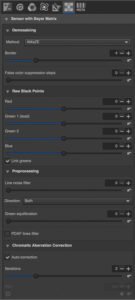

#Print rawtherapee file a tif full
The histogram is now smeared out over the full tonal range, but because of the limited tonality of the original jpg file, holes appear in the histogram. Posterization / Banding is clearly visible as ugly bands after editing the 8 bits jpg file. Using Levels in Photoshop you can optimize the contrast for the red, green and blue channels (Levels, Options, Enhance per Channel Contrast). Let’s assume you wish to adjust this image in such a way that it will get darker (perhaps because you accidently overexposed your image and the real subject was much darker). The histogram shows that 75 % of all color levels, notably the mid tones and shadow tones, are completely absent in this image. Suppose you have an 8 bits jpg file with many light tones (like the image to the right).

Still there are many situations in which a 16 bit file delivers you a much more natural tonality ,especially if you edit pictures extensively, using drastic Levels or Curves adjustments. a 16 bits tif file or a 16 bits psd file), might, therefore seem rather academic. The advantage of a file with more tonality in comparison with a 8 bit jpg (i.e. Photoshop offers you the choice between 8 bit, 16 bits or 32 bits / channel only (see image above).Ī jpg file can record 16,7 million colors, which is more than the eye can see. 12 and 14 bit tif or psd files don’t exist. The RAW file can be transformed in a 16 bit psd or tif file. If you save a file in RAW format, you don’t lose any tonality if you edit this file in Photoshop as a 16 bits/channel. This means an irreversible loss of tonality. A jpg file is only able to save 256 levels of red, 256 levels of green, and 256 levels of blue. As soon as you save an image as a jpg file, these 4096 levels of red, green and blue have to be squeezed into 256 levels for each color. A 14 bit sensor will perceive even 4 times as much color levels. In case of a 12 bit sensor, the sensor registers 4096 levels of red, 4096 levels of blue and 4096 levels of green. Many compact cameras still have 10 bit CCD sensors. The CMOS sensor of a modern digital camera registers colors either in 12 bits or 14 bits. On this page we’ll discuss the advantages of editing a file in 16 bits modus (for raw) over editing in 8 bits modus (for jpg). A RAW file will show less quality loss when you adjust levels, curves, white balance, sharpness, chromatic aberration or vignetting ( click here). However, this changes when you decide to edit your pictures. You will – as far as color is concerned – not see the difference between a jpg file and a RAW file (with up to 4.398.046 million colors). A jpg file can reproduce 16,7 million colors, which is more than a naked eye can distinguish.

In more than 99% of the moments you’ll take a picture, storing the file as a high quality jpg will be good enough to obtain a very beautiful print with natural colors.


 0 kommentar(er)
0 kommentar(er)
